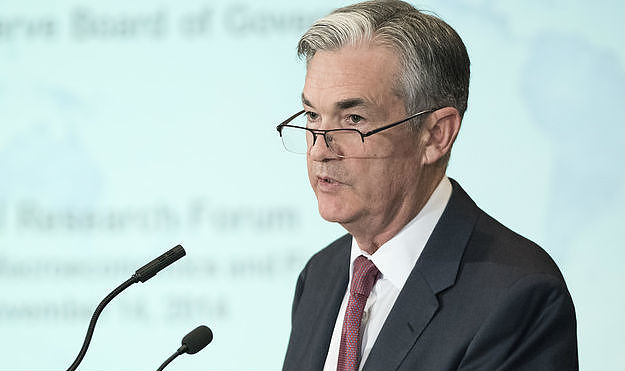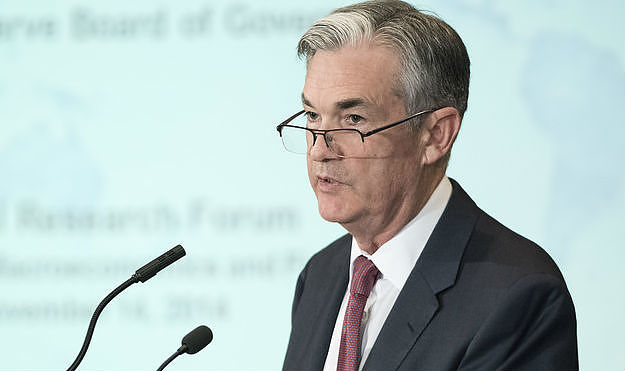
Federal Reserve Chairman Jerome Powell held a news conference and explained why they have decided to leave the policy rate, federal funds rate, unchanged at the range of 5-5.25% at June FOMC meeting.
Powell also responded to questions regarding hawkish revisions to the dot plot, while refraining from committing to a a return to rate increases in July.
Fed meeting press conference key quotes
“Nearly all policymakers view some further rate hikes this year will be appropriate.”
“We are highly attentive to risks high inflation poses to both sides of mandate.”
“It will take time for full effects of monetary restraint to be realized, especially on inflation.”
“Reducing inflation is likely to require below trend growth, some softening of labor conditions.”
“It may make sense for rates to move higher, but at a more moderate pace. We did not discuss whether to go to an every-other-meeting approach. We didn’t make a decision about July.”
“Any forecast about inflation coming down this year will contain a big dose of housing disinflation.”
“The question of speed on rate hikes is a separate from question of level of rates.”
“We will look at all the data, the evolving outlook, and will make the decision in July.”
“The risks of overdoing and underdoing are closer to be in balance.”
“By taking a little more time on tightening, we reduce the chance of going too far.”
“It will be appropriate to cut rates when inflation comes down.”
“Not a single person wrote down a rate cut this year.”
“Rate cuts this year will not be appropriate.”
In its policy statement, the Fed explained that holding the target range steady at this meeting will give them time to assess additional information and implications for the monetary policy.
Furthermore, the Fed reiterated that inflation remains elevated and that they remain committed to returning inflation to the 2% objective. Regarding the financing, the US central bank noted that tighter credit conditions for households and businesses are likely to weigh on the economic activity, hiring and inflation but added that the extent of those effects remains uncertain.
Meanwhile, the Summary of Economic Projections showed that the terminal rate projection for end-2023 got revised higher to 5.6% from 5.1% in March. Similarly, end-2024 rate forecast rose to 4.6% from 4.3%. In summary, Fed projections imply two more 25 basis points (bps) rate hikes this year and 100 bps of rate cuts in 2024. Policymakers also see higher Gross Domestic Product growth in 2023 and a lower unemployment rate and less progress on core inflation than they saw in March.
Market reaction
With the immediate reaction, the US Dollar gathered strength against its rivals and the US Dollar Index climbed above 103.00, erasing a large portion of its daily losses in the process.
Interest rates FAQs
What are interest rates?
Interest rates are charged by financial institutions on loans to borrowers and are paid as interest to savers and depositors. They are influenced by base lending rates, which are set by central banks in response to changes in the economy. Central banks normally have a mandate to ensure price stability, which in most cases means targeting a core inflation rate of around 2%.
If inflation falls below target the central bank may cut base lending rates, with a view to stimulating lending and boosting the economy. If inflation rises substantially above 2% it normally results in the central bank raising base lending rates in an attempt to lower inflation.
How do interest rates impact currencies?
Higher interest rates generally help strengthen a country’s currency as they make it a more attractive place for global investors to park their money.
How do interest rates influence the price of Gold?
Higher interest rates overall weigh on the price of Gold because they increase the opportunity cost of holding Gold instead of investing in an interest-bearing asset or placing cash in the bank.
If interest rates are high that usually pushes up the price of the US Dollar (USD), and since Gold is priced in Dollars, this has the effect of lowering the price of Gold.
What is the Fed Funds rate?
The Fed funds rate is the overnight rate at which US banks lend to each other. It is the oft-quoted headline rate set by the Federal Reserve at its FOMC meetings. It is set as a range, for example 4.75%-5.00%, though the upper limit (in that case 5.00%) is the quoted figure.
Market expectations for future Fed funds rate are tracked by the CME FedWatch tool, which shapes how many financial markets behave in anticipation of future Federal Reserve monetary policy decisions.
- Federal Reserve is widely expected to leave its policy rate unchanged at 5-5.25%.
- Fed will publish the revised Summary of Economic Projections in June.
- US Dollar valuation could be impacted by dot plot and FOMC Chairman Powell’s comments.
The Federal Reserve (Fed) is expected to leave its policy rate unchanged at the range of 5%-5.25% on Wednesday, June 14 at 18.00 GMT.
The Fed will release the revised Summary of Economic Projections (SEP), the so-called dot plot, and FOMC Chairman Jerome Powell will comment on the policy decisions and economic outlook in the post-meeting press conference.
The market positioning suggests that a no change in the Fed’s policy rate is nearly fully priced in, especially after the data from the US showed that the Consumer Price Index (CPI) rose 4% on a yearly basis in May, down sharply from the 4.9% increase recorded in April. According to the CME Group FedWatch Tool, the probability of a 25 basis points Fed rate hike in June is less than 10%.
Analysts at Rabobank see the US central bank resuming the hiking cycle in July:
“Given Powell’s bias toward a pause in June, we expect the FOMC to keep the target range for the federal funds rate unchanged this month.”
“However, because of the reacceleration of the economy, and the modest impact of the banking turmoil on credit conditions, we now expect the FOMC to resume the hiking cycle in July in order to get inflation under control. For now, we expect one rate hike of 25 bps, followed by a longer pause, at least through the end of the year.”
Federal Reserve interest rate decision: What to know in markets on Wednesday, June 14
- The US Dollar Index, which tracks the USD’s performance against a basket of six major currencies, continues to decline heading into the Fed decision, reflecting a broad USD weakness.
- The benchmark 10-year US Treasury bond yield dropped below 3.7% with the initial reaction to the US inflation data but recovered toward 3.8% on Wednesday.
- Wall Street’s main indexes closed in positive territory on Tuesday. The S&P 500 Index reached its highest level since late April above 4,300.
- On Thursday, the US Census Bureau will release Retail Sales report for May. The Fed’s Industrial Production will also be featured in the US economic docket alongside the weekly Initial Jobless Claims data this week.
- The European Central Bank (ECB) is expected to hike its key rates by 25 bps.
- On a monthly basis, the Producer Price Index (PPI) in the US declined 0.3% in May. The annual producer inflation fell to 1.1% from 2.3% in April.
When is the Fed meeting and how could it affect EUR/USD?
The Federal Reserve is scheduled to announce its interest rate decision and publish the revised Summary of Economic Projections (SEP), the so-called dot plot, this Wednesday, June 14, at 18:00 GMT. This will be followed by the post-meeting FOMC press conference at 18:30 GMT. Investors expect the Fed to leave the policy rate unchanged but see a strong probability for at least one more rate hike this year.
Following the collapse of several mid-sized banks in the United States, the Fed unexpectedly changed its policy language in March and said “some additional policy firming” may be appropriate to bring down inflation, dropping the reference to “ongoing increases.” In May, the Fed raised its policy rate by 25 basis points (bps) to the range of 5%-5.25%. In the ensuing press conference, FOMC Chairman Jerome Powell acknowledged that it was difficult to predict how much credit tightening will replace the need for any further rate hikes. Powell, however, reiterated that it would not be appropriate to cut rates later in the year, given the view that inflation will take some time to come down.
In March, the Fed’s SEP showed that the median view of the policy rate at end-2023 stood at 5.1%, matching December’s projection. The publication further revealed that policymakers saw a slower Gross Domestic Product (GDP) growth in 2023, alongside lower unemployment and less progress on inflation than they saw in December. Finally, projections pointed to a total of 75 bps of rate cuts in 2024.
Unless the Fed delivers a significant hawkish surprise by going against the market expectation and raising the interest rate by 25 bps, the US Dollar’s performance is likely to be effected by the terminal rate projection in the dot plot, which can confirm whether the Fed leaves the door open to additional rate hikes even if the policy rate is left unchanged in June.
Previewing the Fed event, “we still think the bar for restarting hikes in July will be high unless inflation pressures clearly accelerate over summer, which we consider unlikely,” said analysts at Danske Bank. “We make no changes to our forecasts, and expect the Fed to maintain rates at the current level for the remainder of the year. A pause could pose near-term upside risks to EUR/USD, but we still maintain a bearish view on the cross towards H2.”
Eren Sengezer, European Session Lead Analyst at FXStreet, shares his outlook for EUR/USD: “A 25 bps Fed rate hike or a terminal rate projection above 5.5% could trigger a decisive rally in the US Dollar and weigh heavily on EUR/USD. On the flip side, a no change in the policy rate combined with a downward revision to end-2024 rate projection could provide a boost to the pair. Market participants will also pay close attention to Powell’s comments. If Powell mentions that credit tightening is less severe than initially feared, that could be seen as a hawkish tone, helping USD stay resilient against its rivals and vice versa. On the other hand, the USD is likely to come under selling pressure in case Powell sounds concerned about the economic activity losing momentum.”
“The near-term technical outlook points to a bullish tilt with the Relative Strength Index (RSI) indicator on the daily chart rising toward 60. Additionally, EUR/USD looks to close above the 100-day Simple Moving Average (SMA), currently located at 1.0800, after having failed to do so on Tuesday.
“Once 1.0860 (Fibonacci 50% retracement of the latest downtrend) is confirmed as support, the pair could face interim resistance at 1.0900 (psychological level, Fibonacci 61.8% retracement) before targeting 1.0960 (static level from early April) and 1.1000 (psychological level, static level).”
“On the downside, 1.0800 aligns as initial support. If that level fails, EUR/USD could slide toward 1.0750 (Fibonacci 23.6% retracement) and 1.0700 (psychological level, static level),” Eren explains.
